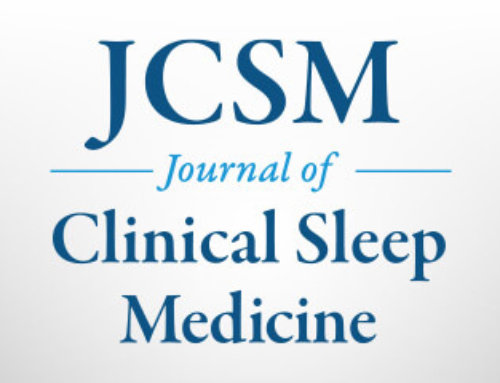EMBARGOED FOR RELEASE
June 12, 2008, at 12:01 a.m.
CONTACT:
Kathleen McCann
(708) 492-0930, ext. 9316
WESTCHESTER, Ill. – Short sleep time is associated with overweight in children and adolescents, a core aspect of which may be attributed to reduced REM sleep, according to a research abstract that will be presented on Thursday at SLEEP 2008, the 22nd Annual Meeting of the Associated Professional Sleep Societies (APSS).
The study, authored by Xianchen Liu, MD, PhD, of the University of Pittsburgh, focused on 335 participants between seven and 17 years of age, who underwent three consecutive nights of standard polysomnography, or an overnight sleep test, and weight and height assessment as part of study on the development of childhood internalizing disorders (depression and anxiety).
According to the results, compared with normal-weight children, overweight children slept about 22 minutes less, had lower sleep efficiency, shorter REM sleep periods, lower REM activity and density, and longer latency to the first REM period. After adjustment for demographics, pubertal status, ethnicity, and psychiatric diagnosis, one hour less of total sleep increased the odds of overweight by about two-fnew, one hour less of REM sleep increased the odds by about three-fnew, REM density and activity below the median increased the odds by two- and three-fnew, respectively.
“Given the fact that the prevalence of overweight among children and adolescents continues to increase, and chronic sleep insufficiency becomes more and more prevalent in the modern society, family and school-based sleep interventions which aim to enhance sleep hygiene and increase sleep duration may have important public health implications for the prevention and intervention of obesity and type-two diabetes in children and adolescents,” said Dr. Liu.
Studies have linked sleep deprivation among children and adolescents to increased incidence of obesity and cardiovascular disease, and can also result in behavioral problems, lead to poor academic performance and affect relationships with their peers.
It is recommended that adolescents get nine hours of nightly sleep and school-aged children between 10-11 hours.
The American Academy of Sleep Medicine (AASM) offers the following tips to adolescents on how to get a good night’s sleep:
- Follow a consistent bedtime routine.
- Establish a relaxing setting at bedtime.
- Get a full night’s sleep every night.
- Avoid foods or drinks that contain caffeine, as well as any medicine that has a stimulant, prior to bedtime.
- Do not stay up all hours of the night to “cram” for an exam, do homework, etc. If after-school activities are proving to be too time-consuming, consider cutting back on these activities.
- Keep computers and TVs out of the bedroom.
- Do not go to bed hungry, but don’t eat a big meal before bedtime either.
- Avoid any rigorous exercise within six hours of your bedtime.
- Make your bedroom quiet, dark and a little bit cool.
- Get up at the same time every morning.
The AASM offers some tips to help your child sleep better:
- Follow a consistent bedtime routine. Set aside 10 to 30 minutes to get your child ready to go to sleep each night.
- Establish a relaxing setting at bedtime.
- Interact with your child at bedtime. Don’t let the TV, computer or video games take your place.
- Keep your children from TV programs, movies, and video games that are not right for their age.
- Do not let your child fall asleep while being held, rocked, fed a bottle, or while nursing.
- At bedtime, do not allow your child to have foods or drinks that contain caffeine. This includes chocolate and sodas. Try not to give him or her any medicine that has a stimulant at bedtime. This includes cough medicines and decongestants.
It is important to make sure that your child gets enough sleep and sleeps well. The value of sleep can be measured by your child’s smiling face, happy nature and natural energy. A tired child may have development or behavior problems. A child’s sleep problems can also cause unnecessary stress for you and the other members of your family.
Those who suspect that they might be suffering from insomnia, or another sleep disorder, are encouraged to consult with their primary care physician or a sleep specialist. Parents should consult with their child’s pediatrician or a sleep specialist.
More information about “children and sleep” is available from the AASM at https://www.SleepEducation.com/Topic.aspx?id=8 and “teens and sleep”, including a new questionnaire that assesses the level of sleepiness in adolescents, at: https://www.SleepEducation.com/Topic.aspx?id=71.
The annual SLEEP meeting brings together an international body of 5,000 leading researchers and clinicians in the field of sleep medicine to present and discuss new findings and medical developments related to sleep and sleep disorders.
More than 1,150 research abstracts will be presented at the SLEEP meeting, a joint venture of the AASM and the Sleep Research Society. The three-and-a-half-day scientific meeting will bring to light new findings that enhance the understanding of the processes of sleep and aid the diagnosis and treatment of sleep disorders such as insomnia, narcolepsy and sleep apnea.
SleepEducation.com, a patient education Web site created by the AASM, provides information about various sleep disorders, the forms of treatment available, recent news on the topic of sleep, sleep studies that have been conducted and a listing of sleep facilities.
Abstract Title: Rapid Eye Movement Sleep is Associated with Overweight in Children and Adolescents
Presentation Date: Thursday, June 12
Category: Pediatrics
Abstract ID: 0195
# # #








